Wednesday June-04 2025 15:53:59
Wheat flour has the characteristics of easy agglomeration, light specific gravity, and easy adhesion due to electrostatic adsorption. Ordinary screening methods are prone to cause sieve clogging, affecting the screening effect and efficiency. The wheat flour ultrasonic test sieve generates high-frequency electrical oscillations through an ultrasonic vibration power supply and transmits them to the screen surface, so that the material is superimposed with ultrasonic vibration while performing low-frequency three-dimensional vibration. This test sieve can usually accurately separate 2-8 particle segments of the material at the same time, realizing fine grading of wheat flour.
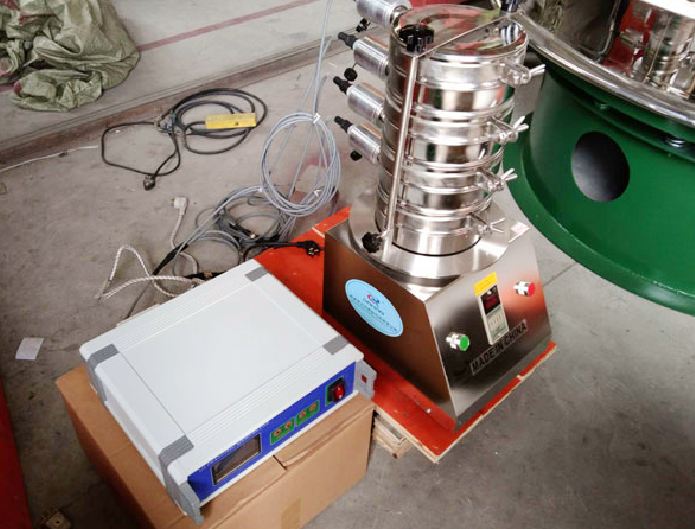
In terms of screening effect, ultrasonic vibration can inhibit flour agglomeration, adsorption and other phenomena, keep particles suspended, effectively avoid screen blockage, and improve screening efficiency by 1-10 times compared with ordinary circular test sieves. It can accurately separate fine particles and impurities in wheat flour to meet different quality requirements.
According to different structures and application scenarios, wheat flour test sieves can be divided into three categories: wheat flour ultrasonic test sieve, wheat flour test sieve, and wheat flour circular test sieve. The three have different focuses on screening accuracy, processing capacity and application scope.
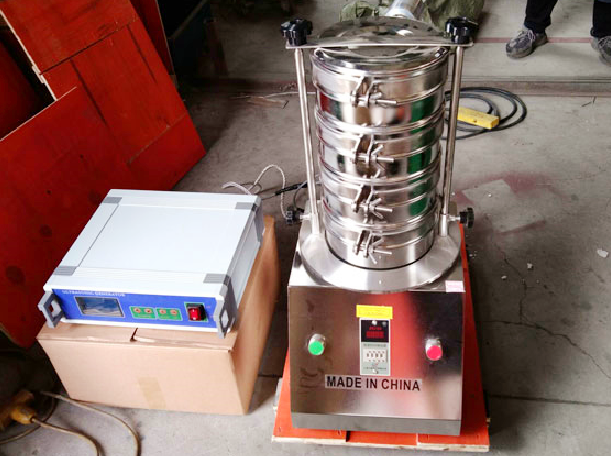
Wheat flour ultrasonic test sieve: combined with ultrasonic technology, it can effectively solve the problem of screen blockage caused by light and easy agglomeration of wheat flour. It supports 80-600 mesh fine screening, with a pass rate of more than 99.5%. The grading screen (1-5 layers) can realize particle classification or impurity removal, uniform screening and weightless screening, high screening accuracy, and can be used in scientific research, quality inspection, flour mill fineness control and other occasions. The output is 0.5-10 times higher than that of ordinary screening screens, usually 0.5-5 tons/hour (depending on the model and mesh number).
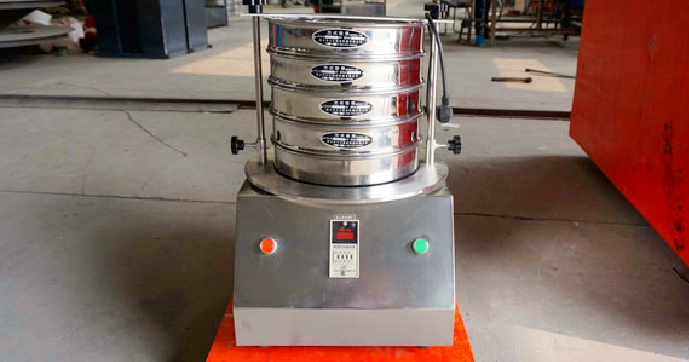
Wheat flour test sieve (standard vibration test sieve): usually a small device (such as 200mm diameter), using standard oscillation mode, equipped with multi-layer screens, suitable for screening wheat flour samples with large particle size differences or working conditions that are not sensitive to screen blocking. High accuracy, suitable for 20-200 mesh screening, suitable for detecting wheat flour particle distribution or quality control, stable screening results, but reduced output, suitable for laboratory or scientific research purposes.
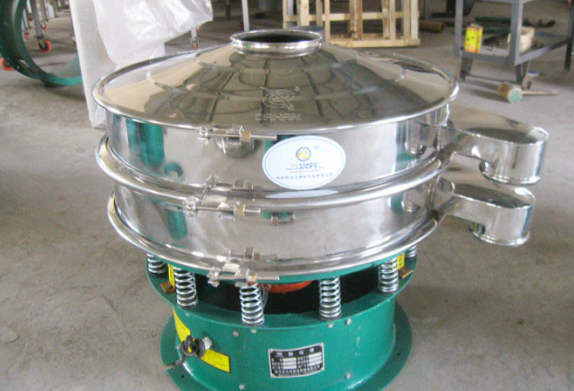
Wheat flour circular vibrating screen: adopts the three-dimensional vibration principle, the screen vibrates evenly, suitable for screening and removing impurities in large quantities of wheat flour on the production line, such as removing large particles, fibers, agglomeration impurities in flour, etc. The screening accuracy is moderate (20-400 mesh), and can be equipped with 1-5 layers of screens, suitable for increasing the effect of wheat flour or simple grading, and the problem of easy screen blocking needs to be cleaned regularly. High output, 1-10 tons/hour (depending on the model and mesh number), suitable for rough processing of wheat flour or large-scale impurity removal.
The wheat flour ultrasonic test sieve emphasizes screening accuracy. The wheat flour test sieve is suitable for routine testing, while the wheat flour circular vibrating screen meets the needs of large-flow continuous screening on the production line. When choosing, it should be comprehensively judged based on the actual application scenario (such as experimental testing or industrial screening), the required screen accuracy and processing volume.
The working principle of the wheat flour ultrasonic test sieve is to superimpose one or more ultrasonic transducers on the traditional test sieve. The core is to use the high-frequency vibration generated by ultrasonic waves to effectively improve the state of wheat flour during the screening process, thereby improving the screening efficiency and accuracy.
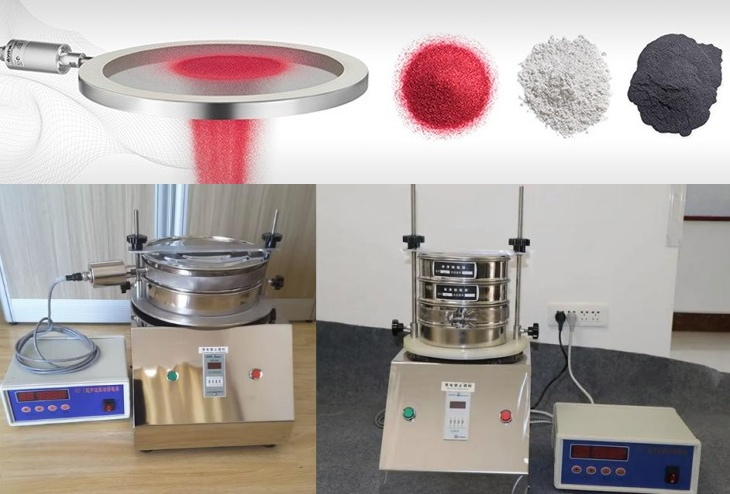
The test sieve is usually driven by a vibration motor to make the entire sieve body and screen produce three-dimensional movement (horizontal, vertical, elliptical or a combination thereof). The ultrasonic generator generates a high-frequency electrical signal, which is converted into high-frequency mechanical vibrations by the transducer, and these high-frequency mechanical vibrations are transmitted to the screen. Since the screen itself also has a certain elasticity, the introduction of ultrasonic waves will generate high-frequency, low-amplitude vibration waves on the screen. The high-frequency vibration of ultrasonic waves on the screen can reduce the mutual attraction between wheat flour particles, making it less likely to agglomerate. Under the combined action of mechanical vibration and ultrasonic vibration, wheat flour particles of different particle sizes will pass through the sieves of corresponding mesh numbers to achieve particle size classification. Usually, the test sieve will stack multiple layers of sieves of different mesh numbers, and wheat flour samples of multiple particle size ranges can be obtained in one operation.
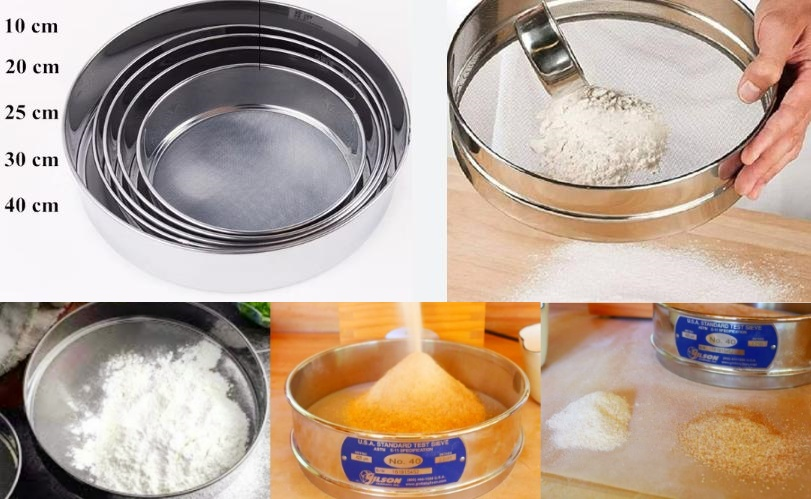
The ultrasonic test sieve for wheat flour is mainly used for accurate detection and grading of the particle size distribution of wheat flour, and is widely used in food processing, flour production enterprises, quality inspection institutions and scientific research laboratories. In flour mills, the equipment is often used to screen finished wheat flour of different fineness grades; in food enterprises, such as noodle products, pastries, and quick-frozen food production, the use of ultrasonic test sieves to detect the fineness of wheat flour helps to control the water absorption rate and processing performance of the dough.
In grain storage and inspection units, the equipment can be used to analyze whether there are lumps, too fine or too coarse particles in the stored wheat flour, and assist in judging the freshness and storage status of the product; in colleges and universities or research institutions, it is used for basic research on wheat flour processing performance, particle behavior, etc. The introduction of ultrasonic function effectively solves the problems of clogging and insufficient precision in the wheat flour screening process, making it an important tool in the screening analysis of fine powder materials.

In the quality inspection of wheat flour, the screening effect is one of the important means to evaluate its fineness and uniformity. By using a standard test sieve or an ultrasonic test sieve, the wheat flour is graded and screened with different mesh sizes to accurately determine its particle size distribution. Wheat flour with high fineness and uniform particles can pass through the fine mesh sieve faster during the screening process, while coarse particles or agglomerates are retained on the sieve surface.
Wheat flour ultrasonic test sieve has a high-frequency vibration function, which can effectively prevent powder from blocking the net, making the screening results more stable and repeatable. The screening effect not only reflects the processing accuracy of wheat flour, but also affects its water absorption, gluten formation, and the taste and appearance of the product. Therefore, through scientific screening combined with the observation of the proportion of the sieve and the morphology of the sieve residue, it is possible to quickly determine whether the wheat flour meets the required quality standards, which is an indispensable part of production quality control and experimental testing.
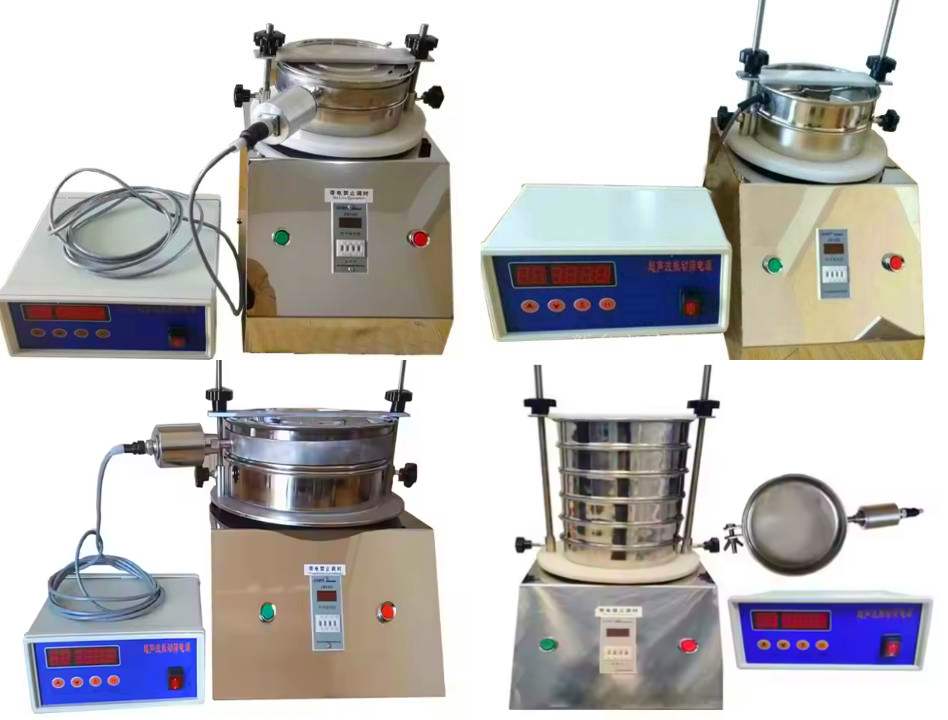
For wheat flour, a fine, sticky material that easily aggregates and blocks the screen, the ultrasonic test sieve is an ideal tool for laboratory particle size analysis. It uses high-frequency ultrasonic energy superimposed on conventional mechanical vibration to effectively solve the problems of screen blockage and agglomeration, thereby greatly improving screening efficiency, accuracy and repeatability, significantly superior to traditional pure mechanical vibration test sieves. It has important application value in the field of flour processing and quality control.
Ultrasonic test sieve for wheat flour
Ultrasonic test sieve for wheat flour is a special device that combines ultrasonic technology with traditional screening principles to efficiently screen wheat flour. The device can...
What is the wet sieving process?
Wet sieving process is a sieving process assisted by a liquid (usually water or a solution containing a dispersant) to more effectively...
Fines content tester can be defined as an instrument used to quantitatively determine the content of fines powder components of a specific fineness...
Micro silica powder particle size analysis test sieve
Micro silica powder, also known as silica fume, is an ultrafine active silica material with a very small particle size, usually between 0.1-0.3 microns, which...
Agricultural gruesos Test sieves
Agricultural gruesos test sieves are experimental equipment used for particle size analysis, grading and testing of agricultural soil, gruesos...
Stainless steel frame and woven cloth
The test sieve is a laboratory equipment used for particle size analysis. Its core components usually include a stainless steel frame and woven cloth (also called a sieve)...
Millet-sand-ultrasonic-test-sieve
Millet sand is a special material with unique characteristics. Its main components include soy fiber, corn starch, guar gum and millet. It is in a...
Jun 04, 2025
Wheat flour ultrasonic test sieve
Wheat flour is easy to clog ordinary sieves due to easy agglomeration and electrostatic adsorption. T...
Jun 04, 2025
Ultrasonic Sieve test for Juice Powder
Ultrasonic sieve test for juice powder is suitable for screening high-sugar juice powder that is easy...
May 30, 2025
Millet sand ultrasonic test sieve
Millet sand ultrasonic test sieve is suitable for fine powder materials above 400 meshes, which can a...
May 29, 2025
200 micron brass mesh soil sieve set with frame
200 micron brass mesh soil sieve set with frame is a soil sieving tool with a pore size of 200 micron...
![]()
Then we look forward to hearing from you
Contact Us
Industrials
Yanjin county forest park gate to the west 1000 meters north road sitemap
